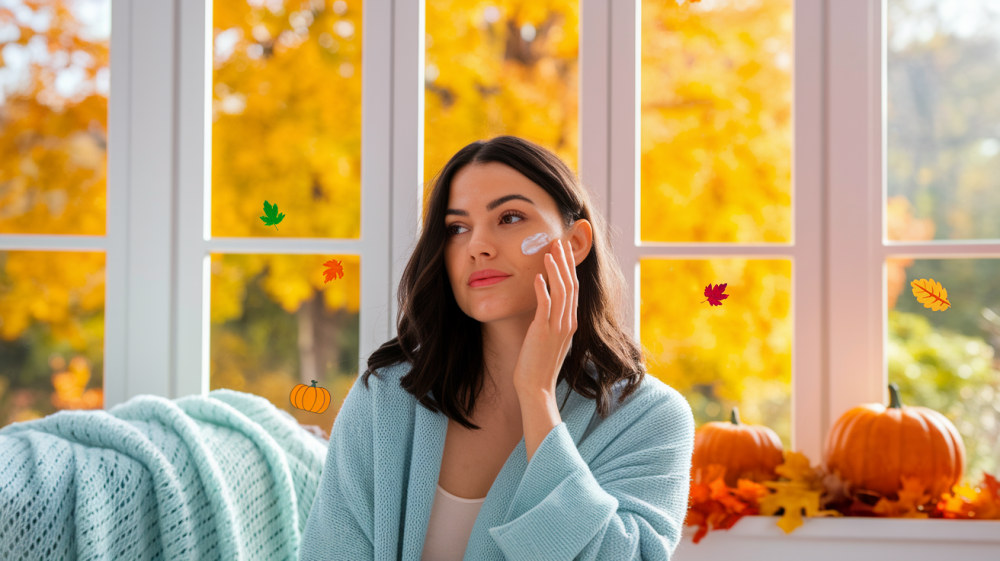Perimenopause might start quietly—maybe a missed period, a random hot flash—but your skin? It’s usually the loudest in the room. As your hormones shift, your complexion goes through a second puberty of sorts: acne where there shouldn’t be, dryness that laughs at your moisturizer, and sudden sensitivity. Sound familiar?
Let’s break down exactly what’s happening and more importantly, what you can actually do to fix it.
TLDR – Quick Guide
- Hormonal changes in perimenopause can cause dry skin, adult acne, dullness, and increased sensitivity.
- Estrogen decline plays a key role in reducing collagen and sebum production.
- Hydrating skincare, hormone-balancing habits, and professional treatments like microneedling or laser therapy can make a huge difference.
- Diet, stress, and sleep are underrated but major skin influencers during perimenopause.
- Seeing a licensed provider for tailored treatments = game-changer.
Detailed Breakdown
What Is Perimenopause?
Perimenopause is the transitional phase before menopause, typically beginning in a woman’s 40s (but sometimes as early as the mid-30s). It can last anywhere from 4 to 10 years. During this time, estrogen and progesterone production becomes erratic, which affects everything—including your skin.
The Main Skin Issues Caused by Perimenopause
- Dryness and Dehydration
- Estrogen helps maintain the skin’s moisture barrier. As levels drop, so does your skin’s ability to retain water. Expect tightness, flaking, and an overall dull appearance.
- Loss of Elasticity and Volume
- Collagen production declines by about 30% in the first five years of menopause. Translation? Wrinkles and sagging may appear more rapidly during perimenopause.
- Adult Acne
- A drop in estrogen can trigger a relative increase in testosterone, resulting in clogged pores and breakouts reminiscent of your teen years.
- Increased Sensitivity
- Skin becomes thinner, making it more prone to irritation and slower to heal. Your trusty exfoliants may now feel like sandpaper.
- Uneven Tone and Hyperpigmentation
- Hormonal shifts can trigger melasma or worsen existing sunspots. The skin’s ability to repair UV damage also slows down.
What You Can Do About It
- Upgrade Your Skincare Routine
- Switch to gentle, hydrating cleansers: Sulfate-free is your best friend.
- Add hyaluronic acid and ceramides: They help lock in moisture and repair your skin barrier.
- Use retinoids cautiously: They’re great for collagen but should be introduced slowly due to increased sensitivity.
- Protect & Rebuild Collagen
- Daily SPF (yes, even in winter).
- Topical antioxidants like Vitamin C help protect and brighten.
- Consider professional treatments like microneedling or radiofrequency skin tightening to boost collagen production.
- Treat Acne with Hormonal Context in Mind
- Over-the-counter salicylic acid or benzoyl peroxide can help, but hormonal acne often needs more targeted solutions.
- Consider talking to a provider about spironolactone or low-dose retinoids.
- Stay Balanced Internally
- Eat omega-rich foods to support skin barrier health.
- Get consistent sleep—growth hormones released during deep sleep aid skin repair.
- Manage stress. Cortisol spikes can trigger breakouts and worsen inflammation.
- Get Pro Help When You Need It
- Medical spas like Pure Skin Aesthetic & Laser Center offer personalized treatments for perimenopausal skin issues—from injectables to laser resurfacing.
- Work with providers trained in hormone-related skin changes to get real results, not guesses.
Key Takeaways
- Estrogen is your skin’s bestie—when it dips, so does your skin’s glow.
- Perimenopause = hormonal chaos, which shows up as dryness, acne, and dullness.
- Skincare isn’t one-size-fits-all anymore. What worked in your 30s won’t cut it.
- Professional treatments can jumpstart your results (think microneedling, SculpSure, injectables).
- Your lifestyle and habits matter. What you eat, how you sleep, and how you manage stress all impact your skin.
FAQs
- At what age does perimenopause usually start?
Perimenopause commonly begins in your 40s, but it can start as early as your mid-30s. It often lasts 4 to 10 years before full menopause sets in.
- Is it normal to get acne during perimenopause?
Yes, totally normal. Hormonal fluctuations—especially estrogen dipping and testosterone rising—can trigger breakouts even if you've had clear skin for years.
- Can skincare products reverse perimenopausal skin changes?
While no product can reverse hormonal changes, a smart skincare routine can significantly improve dryness, sensitivity, and texture. Look for hydrators, antioxidants, and gentle exfoliants.
- Are there treatments that work better for perimenopausal skin?
Yes. Treatments like microneedling, laser resurfacing, and hydrafacials are great options. They’re safe for sensitive skin and target volume loss, fine lines, and dullness.
- Should I see a dermatologist or a medical spa?
Both are great options, depending on your needs. Medical spas like Pure Skin Aesthetic & Laser Center offer customized treatment plans with advanced technology and trained providers for skin + hormonal wellness.







